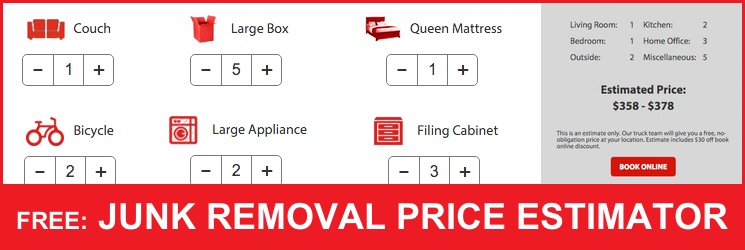Raise Your Task Management Skills By Mastering The Selection Of The Ideal Dumpster Size, Guaranteeing Efficiency And Budget-Friendliness With The Help Of This Comprehensive Guide
Raise Your Task Management Skills By Mastering The Selection Of The Ideal Dumpster Size, Guaranteeing Efficiency And Budget-Friendliness With The Help Of This Comprehensive Guide
Blog Article
Article By-Cabrera Snider
When starting a project that needs a dumpster, the size you choose can considerably impact its efficiency and cost-effectiveness. Think of having the ideal container that suits all your waste without being exceedingly huge or too little. Everything starts with recognizing the nuances of your project and picking a dumpster dimension that aligns with your particular demands. So, before you decide, take into consideration the variables at play to make certain a smooth waste management process throughout.
Factors to Think about
When selecting the right dumpster dimension, there are several essential variables to consider.
Initially, think about the type of waste you'll be taking care of. Different materials might need varying quantities of space, so comprehending what you'll be putting in the dumpster is important.
Next, assess the amount of waste you anticipate to create. If you ignore the quantity, you may need to make several trips to dispose of whatever, which can be bothersome and pricey. On the other hand, renting out a dumpster that's also big can bring about unnecessary expenses.
In addition, consider the area where the dumpster will certainly be put. Guarantee there suffices room for the dumpster to be delivered and picked up without any blockages.
Finally, think of any kind of weight limitations that may use. Exceeding the weight restriction can cause added costs or even the rejection of service.
Dumpster Size Options
For picking the appropriate dumpster dimension, it's vital to have a mutual understanding of the offered options. Dumpster dimensions generally range from 10 to 40 cubic lawns, with variations in between.
A 10-yard dumpster appropriates for little tasks like a garage cleanout or a tiny improvement. If you're dealing with a medium-sized project such as a kitchen area remodel or a basement cleanout, a 20-yard dumpster might be the right option.
For bigger projects like a whole-house renovation or industrial building and construction, a 30 or 40-yard dumpster could be better to accommodate the volume of waste generated.
When choosing a dumpster dimension, take into consideration the amount and type of debris you anticipate to take care of. It's better to select a slightly bigger size if you're unclear to prevent overfilling. Remember, it's more cost-efficient to rent a dumpster that fits your needs instead of having to buy an extra one.
Matching Size to Task
Ideally matching the dumpster size to your project is critical for reliable waste monitoring. To determine the right dimension, think about the range and nature of your project.
For little home cleanouts or improvements, a 10-yard dumpster may be sufficient. These are typically 12 feet long and can hold about 4 pickup truck loads of waste.
For larger tasks like redesigning numerous spaces or cleaning out a large estate, a 20-yard dumpster could be preferable. These are around 22 feet long and can hold about 8 pickup truck loads.
If websites taking on a significant building job or commercial renovation, a 30-yard dumpster could be the most effective fit. phoenix az dumpster rental are about 22 feet long and can fit regarding 12 pickup truck tons of particles.
Matching the dumpster size to your job ensures you have adequate room for all waste products without paying too much for unused capacity.
Verdict
Finally, picking the ideal dumpster size for your job is critical for efficient garbage disposal. By thinking about aspects like the kind and amount of waste, room availability, weight constraints, and spending plan constraints, you can guarantee you have the suitable dimension dumpster for your needs. Ensure to match the dimension of the dumpster to the extent and nature of your project to avoid overspending on unnecessary expenditures.
